How to Transpose Music: The Power to Change the Key of Any Song
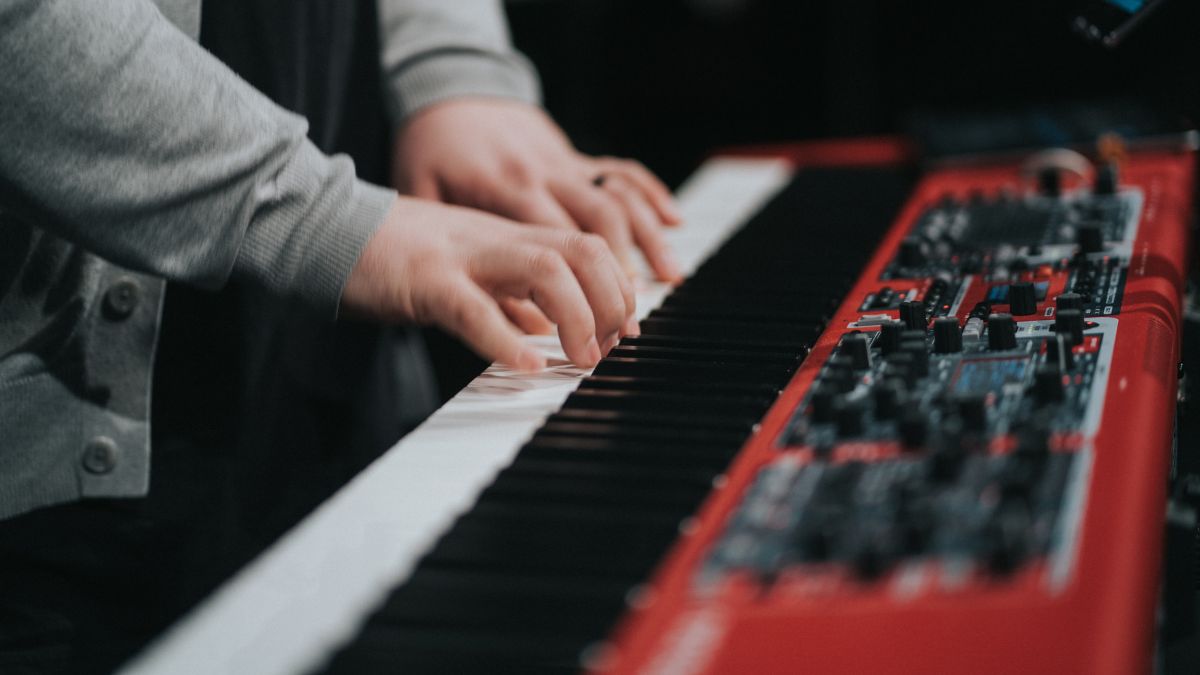
Transposition sounds like a fancy music theory term used by stuffy old professors. But what if we told you that it’s just as relevant today as it was 400 years ago?
Read on to find out why and how you can harness the power of transposition in your music production and songwriting workflow.
What is Transposition in Music?
Transposing means moving the musical key of a song’s melody or chord progression. The notes and chords all move relative to each other, so the new version sounds equivalent to the older version, just with a new tonal center.
Why Transpose Music?
The most common use of transposition is to change the key of a song for a singer. Depending on the singer’s vocal range, biological gender, or vocal style, some keys may be more comfortable than others for that singer to sing in.
To accommodate these variables, an accompanist or band can transpose the song into a different, more comfortable key.
Another common use of transposition is to make a musical sample conform to a song’s key. For example, a producer may want to sample a jazz flute loop. The producer’s track is in the key of “C”, but the sample is in “C#”. Using digital technology, the producer can transpose the sample to match the key of the rest of the song.
Finally, DJs and live electronic musicians also use transposition to create smooth transitions and mashups of two different songs.
How to Transpose a Piece of Music
One important tidbit of knowledge required to transpose quickly and correctly is to know the distance between the existing tonic note and the new tonic note in semitones.
Semitones or “half-steps” are the space between adjacent keys on the piano, or between two guitar frets. There are 12 notes in the chromatic scale of Western music, and therefore 12 possible semitones we can transpose to.

If you just want to move the melody or chord progression up or down by a half-step, you just need to find the transposition feature in your DAW and select +1 or -1.
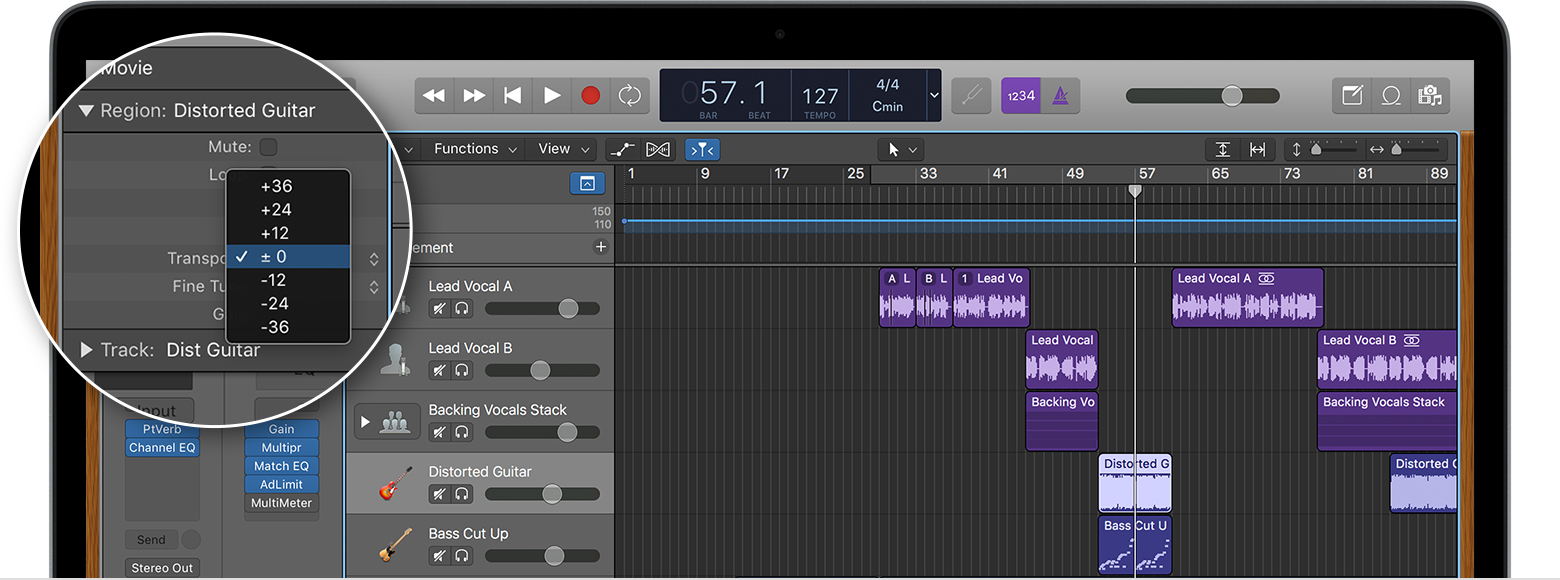
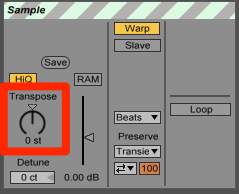
A quick hack to help you find the key of a song or sample is to listen to the first and last note or chord. Many songs and melodies begin and end with the tonic, which is the first note or chord in a song’s key.
Once you’ve done this for both elements, you can determine the number of semitones in between the two keys. Another easy hack for this is to simply play the two notes on the piano or MIDI keyboard and count the number of keys between the two notes.
Bonus tip: many sample libraries include the pitch/key of the sample in the file name!
If the sample you’re working with is particularly short, or doesn’t contain enough harmonic information to place it definitively in a key, that’s okay! Some samples may work transposed to different keys. If a sample just contains two notes for example, it could work in any number of keys. Conversely, a chord sample could work in multiple keys as well. For instance, if I wanted to transpose a sample of a Fender Rhodes playing a “G” major chord to an “A” major chord
An "A" major chord contains the notes A, C#, and E. Therefore, any musical key that includes these three notes can contain an "A" major chord.
A major (contains A, C#, and E)
E major (contains E, G#, and B, which is the relative major of A minor)
D major (contains D, F#, and A, which is the dominant of G major)
B minor (contains B, D, and F#, which is the relative minor of D major)
A major key sample may also work in a minor key, provided it’s the “relative” key.
Use your ears and experiment, you’ll only get better!
How to Transpose Key Signatures
Now that we’ve addressed how to transpose audio inside of a DAW, let’s discuss how we can transpose songs into different keys on an instrument or with sheet music.
Remember, all notes and therefore chords in the piece must move relative to each other to achieve proper transposition. This creates accidentals that may not have been present in the original key!
For example, if we transpose a melody from “C” major into “G” major we add one accidental (black piano key) to the scale. “F” becomes “F#”. In order to notate this, we’ll need to change the piece’s key signature.
Now we’ll need to move each note relative to the rest of the notes. If we take the beginning of “Twinkle, Twinkle” we have the notes CC GG AA D.
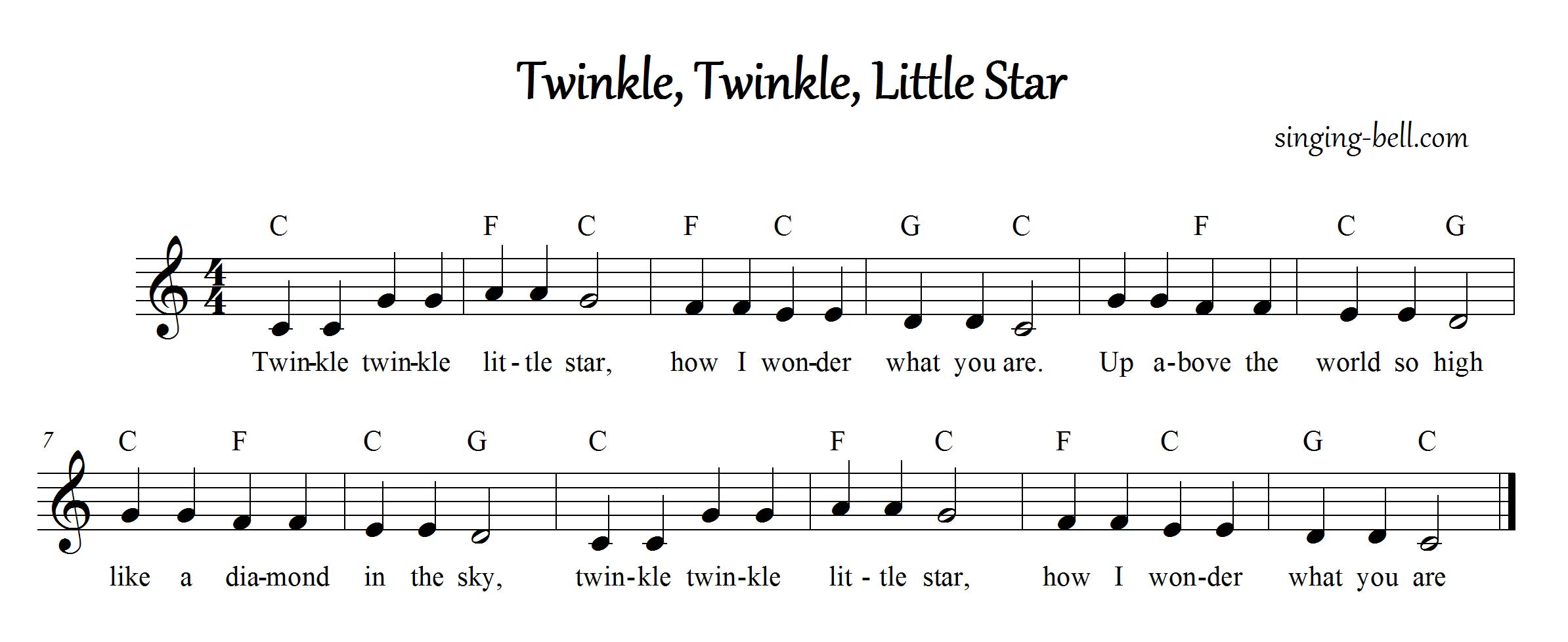
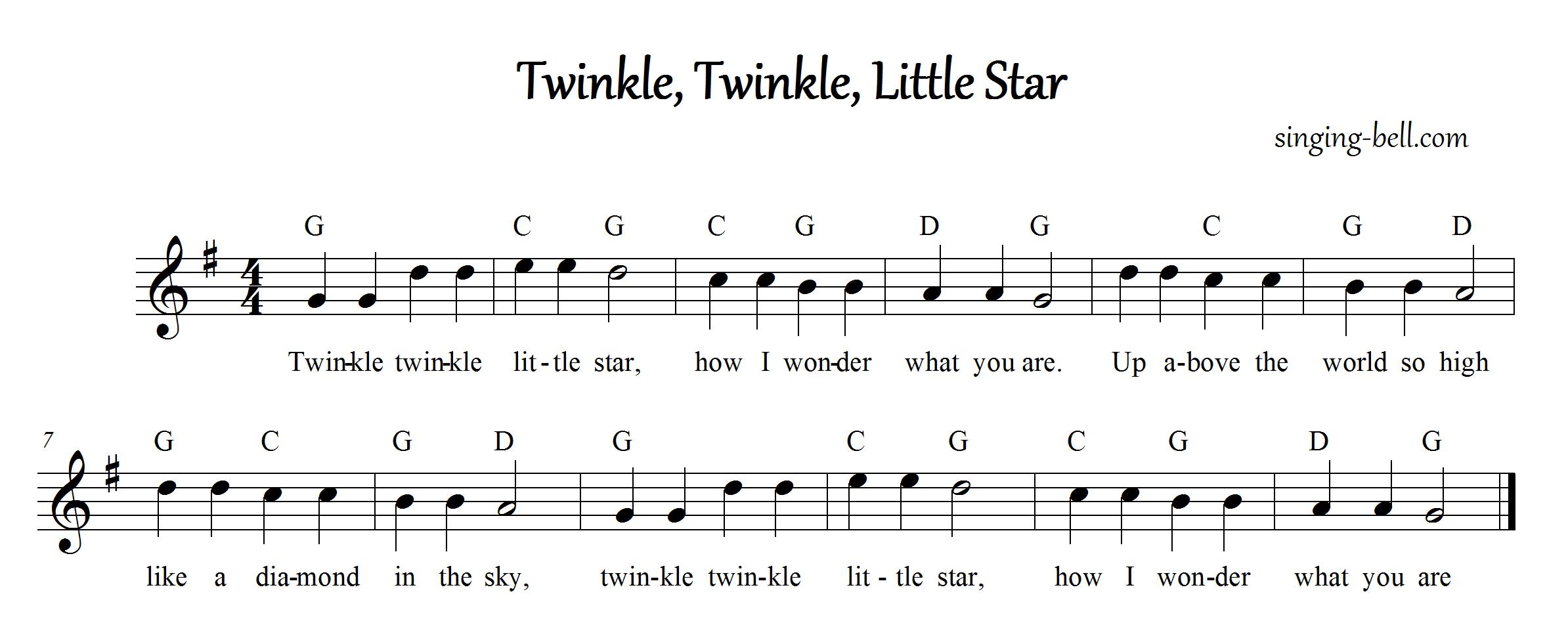
Doing this one note at a time is a great exercise! However, for practical purposes, this method is incredibly time consuming and tedious. Thankfully, there is a shortcut to help us expedite the process.
Learning which accidentals are present in different musical keys via the Circle of 5ths gives us a shortcut to knowing which notes will be sharp or flat in the new musical key. Instead of figuring out each note one at a time, we’ll be able to ignore sharps and flats by just transposing the notes alphabetically. Then, we can change the key signature to denote the correct accidentals.
This method also tells us which chords will be used and whether the chords are major, minor, or diminished.
One pitfall to watch for is making sure all accidentals conform in the new key. For instance, you don’t typically have # and b (flat) notes in one key signature. Choose whether you are placing the transposed version in the sharp or flat key if you are dealing with enharmonic keys such as D#/Eb, G#/Ab, or A#/Bb.
Eventually you will learn this by rote and transposing will become 1000% easier and more efficient.
Continuing to practice ear training, specifically recognizing intervals by ear and by sight, will also help the process become more intuitive.
Transposing songs can still be draining, regardless of how many quick tips or hacks we use to make it easier.
Did you know many chord charts use numbers or roman numerals for this exact reason? Number charts allow a musician to play the piece in any musical key. Instead of creating a new chart or needing to “sight transpose” the song on the fly, you can simply apply the numbers to any key beginning with the tonic.
We hope this post helped shine a new light on transposition and its many incredible uses in modern music making. Keep practicing, training your ears, and we can’t wait to see how you use these new tools in your music making and creative process!
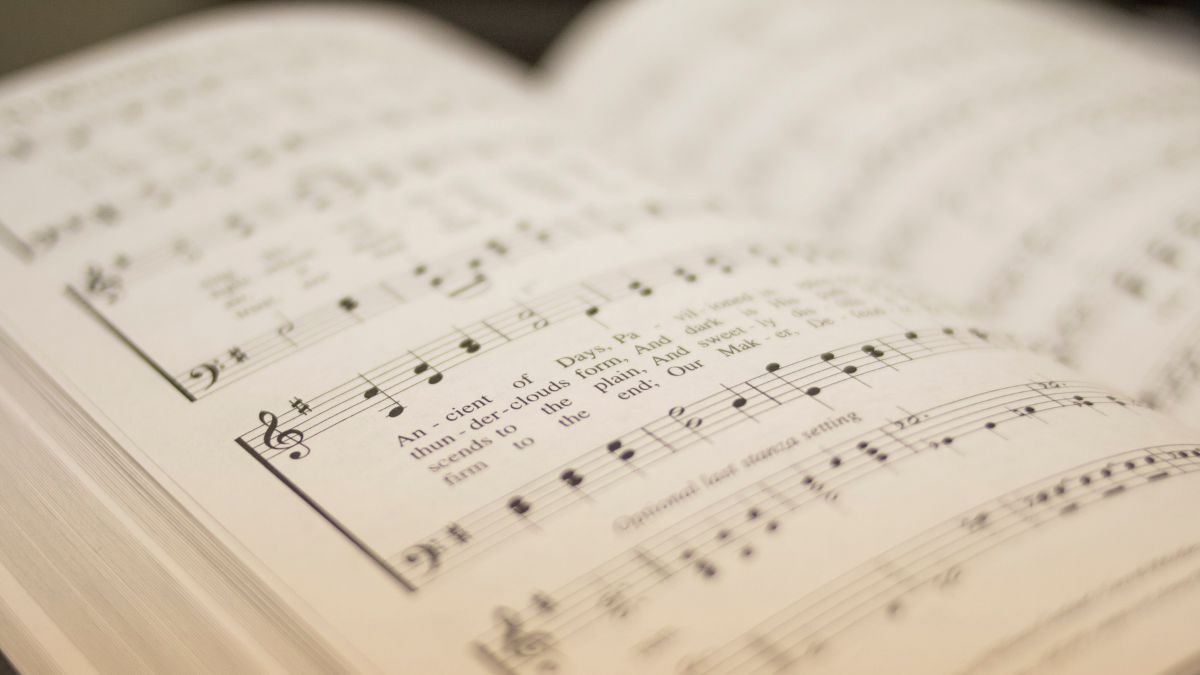
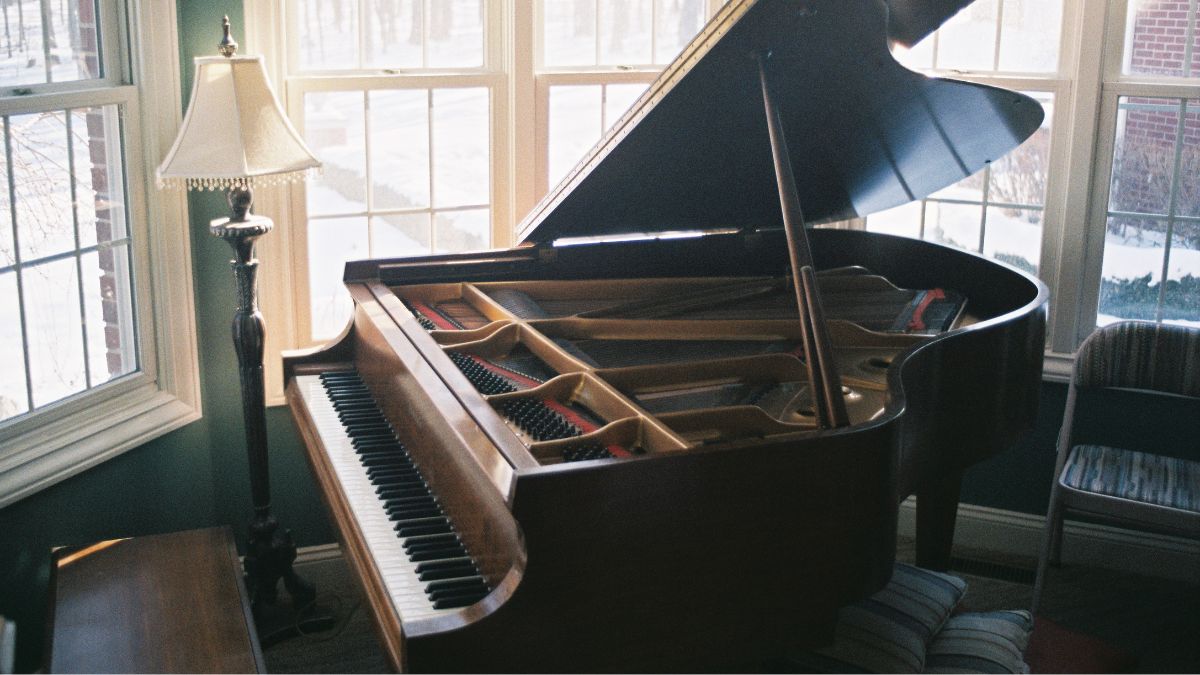
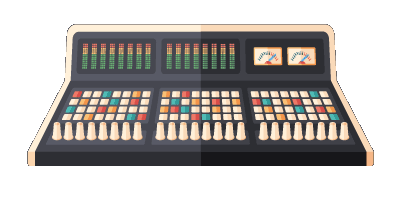
Comments:
Login to comment on this post